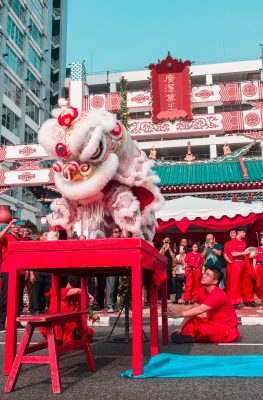Published on February 16, 2015
Whenever Filipino’s are asked about their favourite sports, Basketball heads the list, while boxing and billiards vie for second spot, followed by popular badminton.
Indeed, basketball is by far the most popular team sport in the Philippines. It has been played for nearly a century in the Philippines, brought along by the Americans. The Philippine Basketball League (PBA) was established in 1975, but prior to that, professional leagues already had a strong following.
It is played every day across the country, by men and women alike. Next to the PBA, there are many local and regional basketball associations, comprising various teams competing for a title. It is being played everywhere, in the neighborhoods, on the streets, in gyms and at schools. League matches are featured on TV and many Filipinos watch basketball at a venue for a small fee, participating in the merriment.

Basketball is omnipresent in the Philippines; Source: www.it.wikipedia.org
Notwithstanding ‘the basketball mania ruling the Philippines’ as someone dryly put it, when asked about the National Sport of The Philippines, answers are more varied with no particular sport overwhelmingly singled out. Football is mentioned and so is Martial Arts Forms, in particular Arnis de Mano.
Another contender is “Sipa”, though it’s thought to be less trendy nowadays. Nonetheless, historically it’s considered the Philippines national and traditional native sport as it predates the Spanish rule, going back to the 15th century. Surviving mainly as a children’s game, it derived its name from the object being used to play, the Sipa. It is made of a washer (a metal stud, coin-like object), covered with cloth or a bunch of rubber-bands or colourful threads attached to it, usually plastic straw. In the Philippines, children commonly play games using native materials or instruments due to limited resources of toys and lack of money. Modern Sipa ball versions are made of feather light balls similar to the shuttle-cock which is used in badminton.The Sipa is thrown upwards for the player toss using only the leg, particularly the area from the foot until above the knee; the player must prevent the Sipa touching the ground by hitting it several times. Each hit is counted; the player kicking the Sipa most wins the game.


Sipa on the Philippines;Sources:www.lackbaydiwapinas.com (left) and www.pic2fly.com(right)
However, it is Sipa’s team play variant, called “Sipa Lambatan” that, in accordance with customs and culture of the Philippines, deserves the name of ‘National Sport’. The game is played on a court surface, about the size of a modern day tennis court, either indoors or outdoors – by 2 teams consisting of 1, 2 or 4 players on each side. The aim is to kick the ball (rattan, cane, and wicker) back and forth over a high rise net in the middle of the court. A Sipa coach told me that in this variant the Sipa is allowed to touch the ground. The sport requires speed, agility and extremely good ball control.

Sipa’s team variant, Sipa Lambatan; Source: http://farm3.static.flickr.com/2549/3781873723.jpg
The more professional variant of Sipa is known as Sepak Takraw played a/o by clubs of The Philippine Amateur Takraw Association (PASTA), which in the past two years joined the Super Series, Kings Cup World Championship and SEA Games; testimony to which the photos underneath, courtesy of the Philippines National Tourism Organization.

Sepak Takraw, a serious sport; Source: Philippine Amateur Sepak Takraw Association (PASTA)









